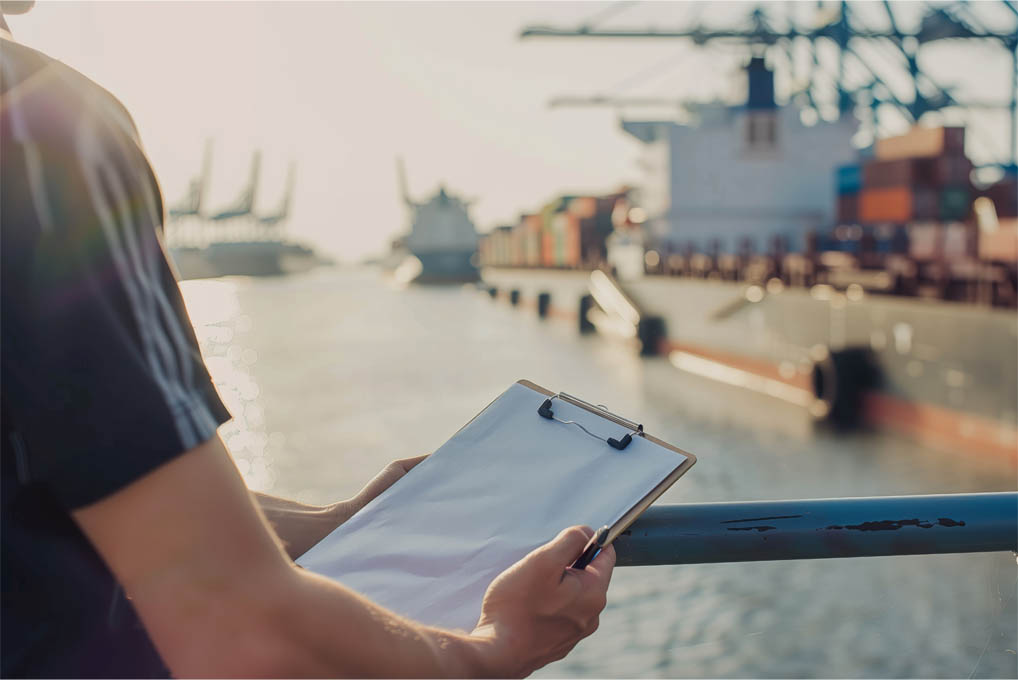
In the foreign trade and logistics sector, one of the documents that everyone frequently encounters is the bill of lading. However, not all bills of lading have the same features. If you are curious about questions like “What is SWB?”, “How does the Sea Waybill bill of lading work?”, you are in the right place. Let’s explore together what this important document is, how it is used, and what advantages it offers.
What Is Sea Waybill?
The Sea Waybill is a transportation document used in maritime transportation that certifies the transportation of goods but does not represent ownership of the goods. This document is also known by the abbreviation SWB. Unlike traditional bills of lading (Bill of Lading), the Sea Waybill is not a order or negotiable document. It allows the consignee written on the document to take delivery of the goods directly. The recipient of the shipped goods only needs to present the document; this facilitates faster transactions. While facilitating trade, the Sea Waybill also functions as a reliable communication tool between parties.
You can visit our page to learn more about our maritime transportation services!
Why Use SWB?
For Fast Delivery
In conventional bills of lading, the original physical document is required to receive the goods. This can cause significant delays, especially in time-sensitive shipments. The recipient has to wait for the documents, which prolongs the delivery process. However, with the Sea Waybill, such a requirement is not necessary. When the goods arrive at the port, the recipient can take delivery directly without waiting for the document. This makes logistics processes more efficient and increases customer satisfaction. For fast delivery, such innovative solutions are critical for companies seeking a competitive advantage.
Compatible with Electronic Systems
Solutions compatible with electronic systems make it easier to adapt documents like the Sea Waybill into digital formats. This accelerates e-commerce processes. Working in harmony with modern logistics systems and ERP integrations increases business efficiency.
Secure Buyer-Supplier Relationships
If there is trust between the buyer and the seller and the payment method is open account or cash, SWB is an ideal choice. This system helps establish trust between parties and ensures smoother trade operations. Since the goods cannot be claimed by others, trade risk is minimized. It creates a profitable business relationship for both parties and lays the foundation for long-term cooperation.
When Is the Sea Waybill Used?
In maritime transportation, using the Sea Waybill is common in situations where the exporter and importer know and trust each other. In such relationships, the need to deal with official procedures for documents decreases because both parties are aware of each other's reliability. When payment is not made against goods but through systems like open account, the Sea Waybill can be preferred. In this case, payments are made after the goods are delivered, which indicates mutual trust. Additionally, when freight is paid in advance, this type of bill of lading becomes more attractive. Since the importer has already paid for the goods, the process speeds up. Using the Sea Waybill in operations where quick delivery is essential and documents cannot be waited for makes the process more streamlined.
Differences Between Sea Waybill and Traditional Bill of Lading
Maritime transportation involves clear differences between the Sea Waybill (SWB) and the Traditional Bill of Lading (B/L). First, the Sea Waybill is not a document of title; therefore, the person who owns the cargo cannot transfer ownership by endorsing this document. Conversely, the Traditional Bill of Lading functions as a document of title and is negotiable, which is important for transferring ownership. Additionally, with the Sea Waybill, there is no need to present the original document to receive the goods; this allows recipients to take delivery more quickly. On the other hand, the original document must be presented for the Traditional Bill of Lading, which can prolong the delivery process. Regarding electronic use, the Sea Waybill can be easily processed digitally, while the Traditional Bill of Lading has more limitations in this regard. Therefore, the Sea Waybill is preferred to accelerate commercial transactions and reduce bureaucratic barriers. Although both documents are important for maritime transportation, they differ in terms of usage conditions and features.
Advantages of Sea Waybill
The Sea Waybill used in maritime transportation offers many advantages that facilitate logistics processes. First, there are no delays in documents, ensuring that shipments arrive on time. Additionally, less paperwork and more digital solutions speed up transactions and reduce bureaucratic burdens. Speed and efficiency in logistics processes increase the competitive power of companies. It provides flexibility in delivery; thus, delivery processes can be managed more dynamically. Moreover, you do not have to deal with complex endorsement procedures, simplifying workflows and reducing costs.
You might be interested: What is a Bill of Lading?


